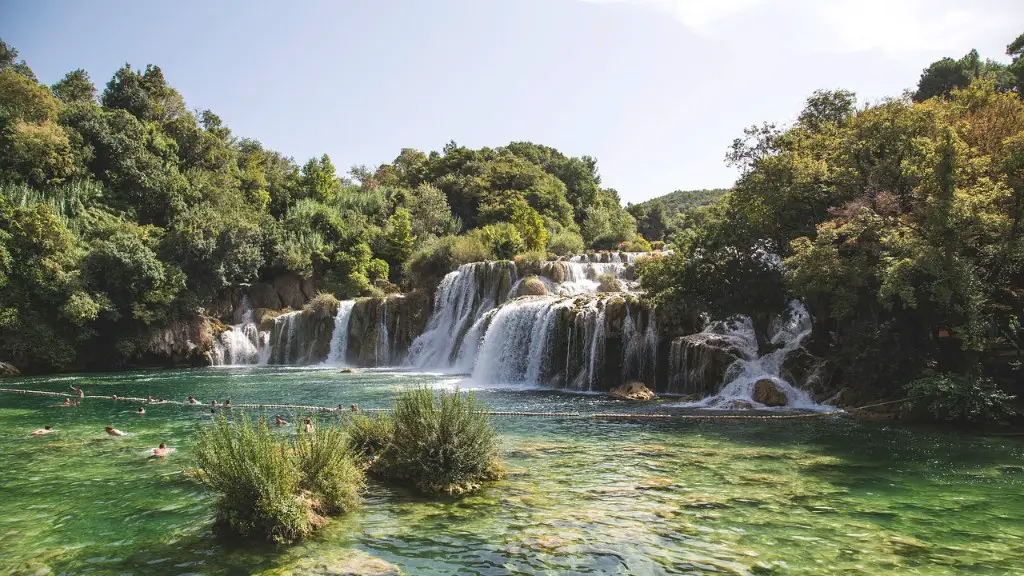Mississippi is the second-longest river system in the United States and one of the most iconic. It is a vital part of American culture and has had a strong influence on the country’s history, music and literature. Its significance is immense and often overlooked. Its waters are so powerful that there is hardly a state that the mighty Mississippi has not touched.
The river starts in the northern part of Minnesota and flows south, eventually meeting with the Gulf of Mexico in Louisiana. While the lower Mississippi is wide and slow-moving, the upper Mississippi is much narrower and more turbulent than its southern cousin. Both the main channel and the several tributaries that join it, crisscrossing the states and bisecting cities along their way, carry the river’s might to the Gulf.
The Mississippi River is a complex and dynamic waterway, with its size and seasonal levels affected by so many variables, from climate and geography to flows from the many creeks, streams and other rivers that feed into it. The watershed of the Mississippi is vast and covers all or part of 31 states and two Canadian provinces. The river has also been extensively engineered and regulated to ensure it can accommodate the needs of an increasingly complex modern economy.
The river has played a vital role in shaping the landscape and the lives of millions of people as it stretches from its source all the way to the Gulf. It has been key to the development of cities, trade and agriculture. It was also the birthplace of a particular genre of music, the Mississippi Delta Blues, as well as shaping the American folklore, full of stories featuring the river as a backdrop.
The flow of the Mississippi River is one of nature’s great marvels and its power is stunning. While the currents and types of sediment it carries vary, the direction of its flow has stayed the same over millennia – an ebb and flow of water that moves downstream and eventually returns to the sea. In that sense, the Mississippi River is a timeless river, never really ending, but eternally carrying on.
Yet, as it moves along, the Mississippi River faces threats. Humans activities along the river can have an impact on its flow, especially as climate change significantly modifies weather patterns and the river’s watershed. In some areas, levees, locks and dams can impede on the natural flow of the river, leading to erosion and sedimentation problems and altering its health. In the upper portions of the river, agricultural run-off, sewage and industrial pollution can be damaging the river’s ecosystem.
The future of the Mississippi River is uncertain but it is also full of potential. Efforts to protect and to improve its environment are ongoing, and if these are successful, we can expect to continue enjoying the river for generations to come.
Where does Mississippi River Flow
The Mississippi River flows in one continuous direction—south across the United States. Its water gathers in the headwaters of Lake Itasca, located in northern Minnesota, and then snakes its way to the Gulf of Mexico. Along its intricate pathway, the Mississippi passes through 10 states: Minnesota, Wisconsin, Iowa, Illinois, Missouri, Kentucky, Tennessee, Arkansas, Mississippi and Louisiana. The river drains at least 40% of the United States and provides drinking water for millions of citizens.
What is the Length of Mississippi River
Measured from its source, the length of the Mississippi River is more than 2,000 miles (3,220 kilometers). The river’s width varies from one place to another, depending on its speed, depth and the characteristics of the waterways it passes through. At its widest point, the Mississippi is 11 miles (17.9 kilometers) from east to west. At its deepest point—near Baton Rouge, Louisiana—it is 200 feet (61 meters) deep.
Why is the Misssissippi River Important
The Mississippi River is of immense importance to the United States. It has been integral in transporting goods since early settlers to the country moved down the river to establish new communities. Later, traders and travelers used the waters to traverse the country, leading to the growth of industry and the expansion of settlements. Today, the river is a critical part of the country’s transportation and economy. It not only provides a critical shipping route, but also allows barges to move raw resources up and down the river.
What Challenges Does Mississippi River Face
The Mississippi River is facing a number of challenges. These include overfishing, changes in the climate which affect the river’s seasonal flows, levees and dams which can impede the flow of the river, increased pollution from industrial and agricultural waste, and changing water levels due to irrigation. Despite these threats, the Mississippi River remains a source of inspiration for all of us, an ever-flowing testament to the power and beauty of nature.


